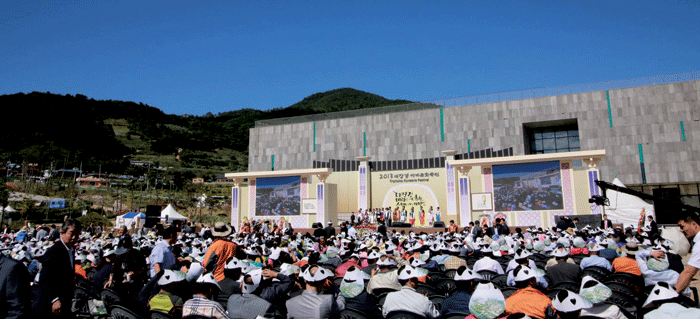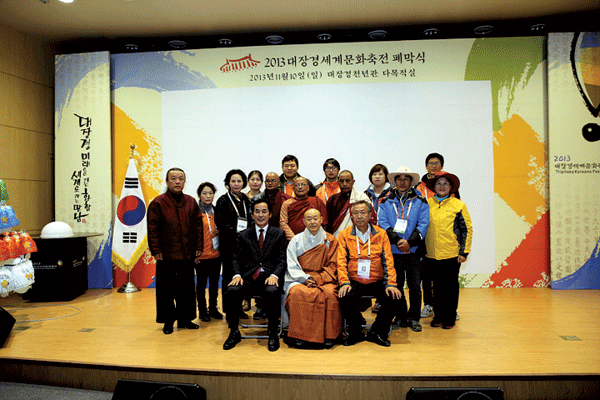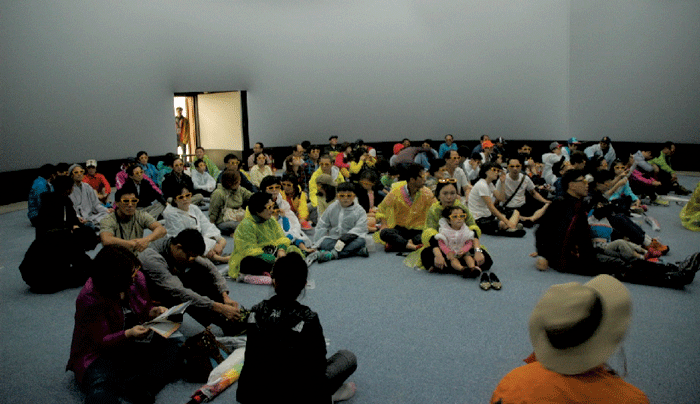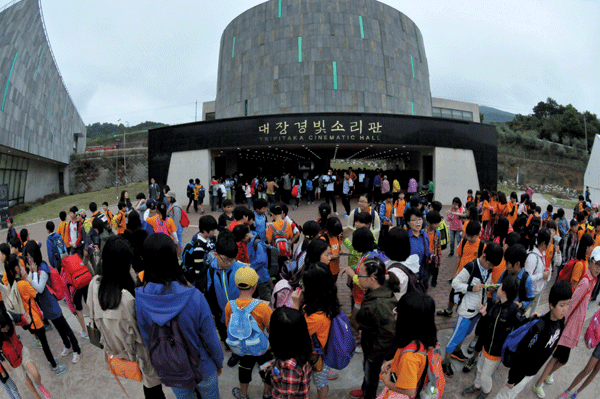Including 45,000 foreigners
Including 45,000 foreigners
2013 Tripitaka Koreana Festival in
Hapcheon draws 2 million visitors

In celebration of the millennial anniversary of the creation of the Tripitaka Koreana, the Millennial Anniversary of the Tripitaka Koreana Organizing Committee hosted the 2013 Tripitaka Koreana Festival for 45 days from September 27 to November 10 at the Theme Park of Tripitaka Koreana near Haein Temple in Hapcheon-gun, Gyeongsangnam-do. The Organizing Committee first held the Tripitaka Koreana Festival in 2011 in Hapcheon-gun. The Tripitaka Koreana, dubbed "palman-Daejanggyeong" in Korean, is a collection of Buddhist scriptures carved on more than 80,000 wooden printing blocks, created in the 13th century. It is considered as the most comprehensive set of Buddhist scriptures found to date, and they are kept at Haein Temple. They are designated as the National Treasure of Korea and the UNESCO World Heritage.

Featuring a variety of programs, including exhibition of 8 wooden blocks of the Tripitaka Koreana, 80 ancient altar portraits of Buddha, and pictures as well as international scientific symposiums, the 2013 Tripitaka Koreana Festival attracted more than 2 million visitors, including about 45,000 foreign visitors. Specifically, visitors who came from Spain, Canada, Mexico, Japan, Vietnam and Sri Lanka showed keen interest in the Festival and Tripitaka Koreana. During the Festival period, Haein Temple also unveiled a 1,200-year-old Buddha statue for the first time. The 7.5-meter high “Maaebul” Buddha statue engraved into a rock wall in Mt. Gaya is one of the most well-preserved statues in Korea estimated to have been built in the 9th century of the Silla Dynasty (57 B.C.-935 A.D.).

The Festival is meaningful in that it demonstrated artistic value and excellence of the Tripitaka Koreana and its contribution to development of 3-dimensional printing technology. It also served as a chance of widely publicizing determination and wisdom of the ancient people for overcoming national crises. Most visitors highly evaluated the Festival. Some visitors commented that it changed the paradigm of festivals by enhancing pride of Korean people, and others said it is the most impressive and successful event among programs that used cultural properties as tourism resources. Foreign visitors expressed astonishment at magnificence of the Tripitaka Koreana and technology of preserving them. Some of them hoped that centuries-old printing culture in Korea would be widely publicized across the world.

The Goyreo Dynasty began to produce wooden printing blocks of the Tripitaka Koreana in 1011 and completed their production in 1084. But all of them were burned and lost due to Mongolians’ invasion in 1232. And then the Goryeo Dynasty began to produce new wooden blocks again in 1236 and completed in 1251. Each wooden block is 69 centimeters, 24 centimeters and 2.6~3.9 centimeters in length, width and thickness, respectively, and it weighs 3~4 kilograms. Today 81,350 blocks are preserved at Haein Temple, and their total weight reaches 280 tons. As the culmination of culture of the Goryeo Dynasty, the Tripitaka Koreana is appraised to be the ‘ultimate beauty of wooden printing technology’. The Tripitaka is a comprehensive collection of written Buddhist scriptures, including doctrines of Buddhism.

These wooden printing blocks of the Tripitaka Koreana have been preserved intact for over 760 years, though they are vulnerable to decay, thanks to unique architectural design of their storage buildings. In order to prevent wooden blocks from being decayed or damaged, these buildings were scientifically designed to ideally circulate air and maintain optimal temperature and humidity around the year, regardless of rainfall or drought. And their floors are also filled with soil mixed with charcoal, clay, sand, salt and lime powder to control humidity. Moreover, wooden blocks of the Tripitaka Koreana endured numerous crises, fortunately and mysteriously, such as Japanese invasion in the middle of the Joseon Dynasty and the Korean War in early 1950s.
The wooden blocks of the Tripitaka Koreana were produced on Ganghwa Island, Gyeonggi-do, and moved to Haein Temple in Hapcheon-gun, Gyeongsangnam-do in early years of the Joseon Dynasty. Haein Temple is the first Dharma Jewel Monastery and one of the largest temples in Korea built in 802 during the Silla Dynasty period to elucidate philosophy and thoughts of the Avatamsaka School. In 1488, buildings of the Temple were largely expanded, and a part of them was reconstructed after being destroyed by wars later. k

